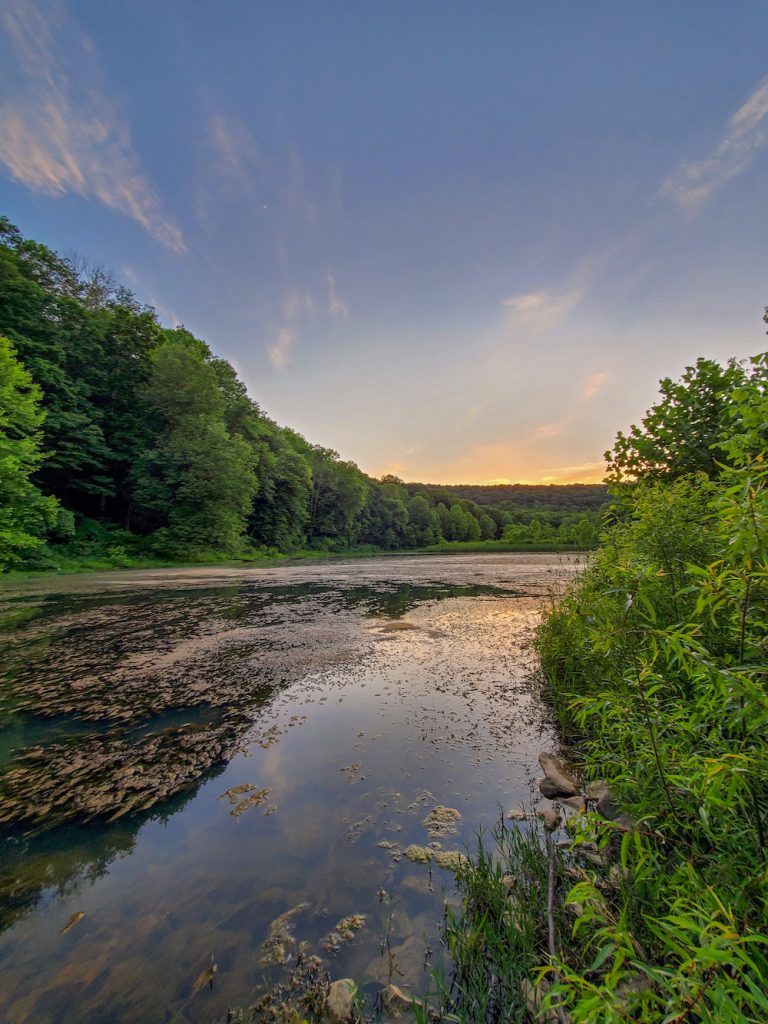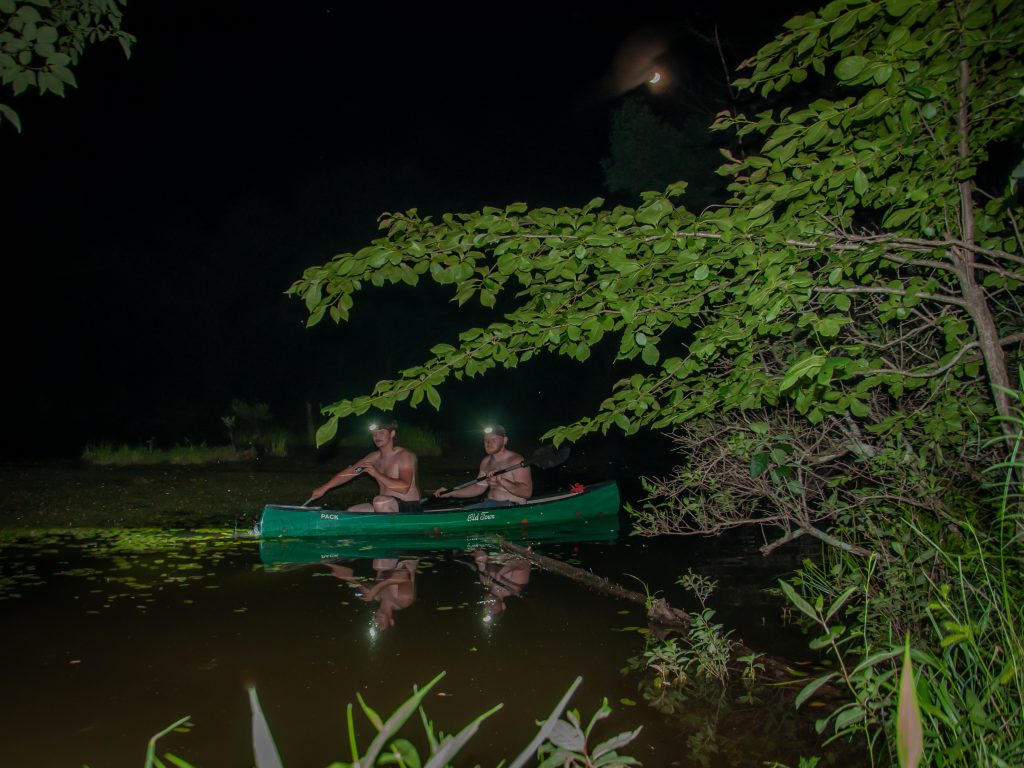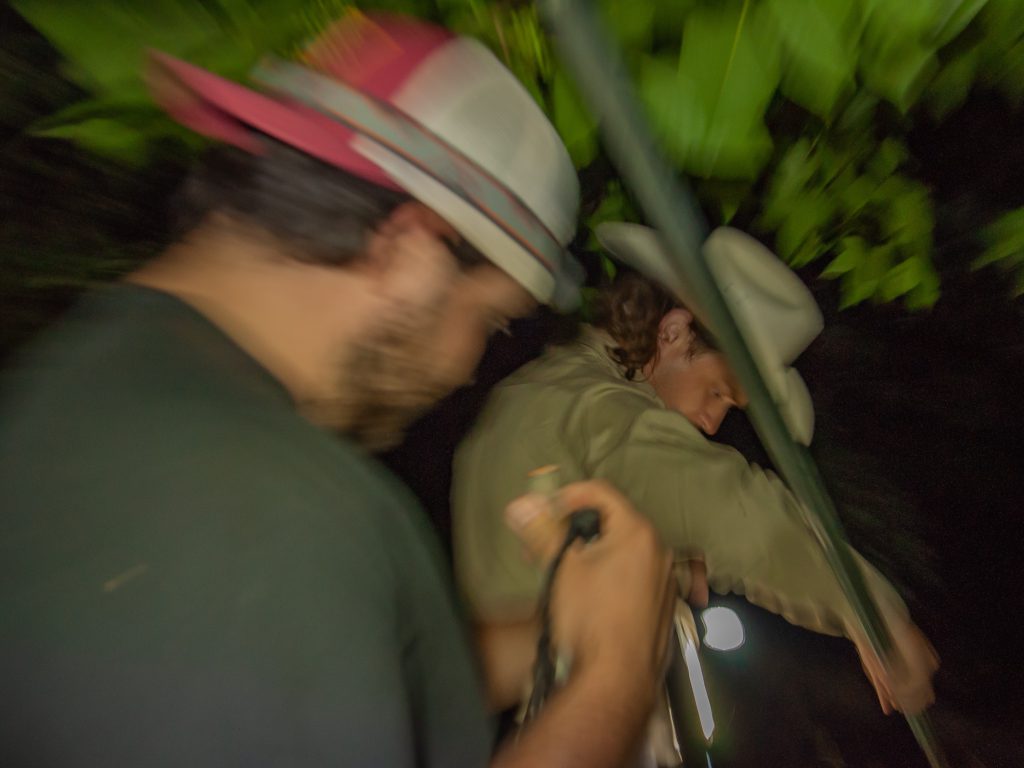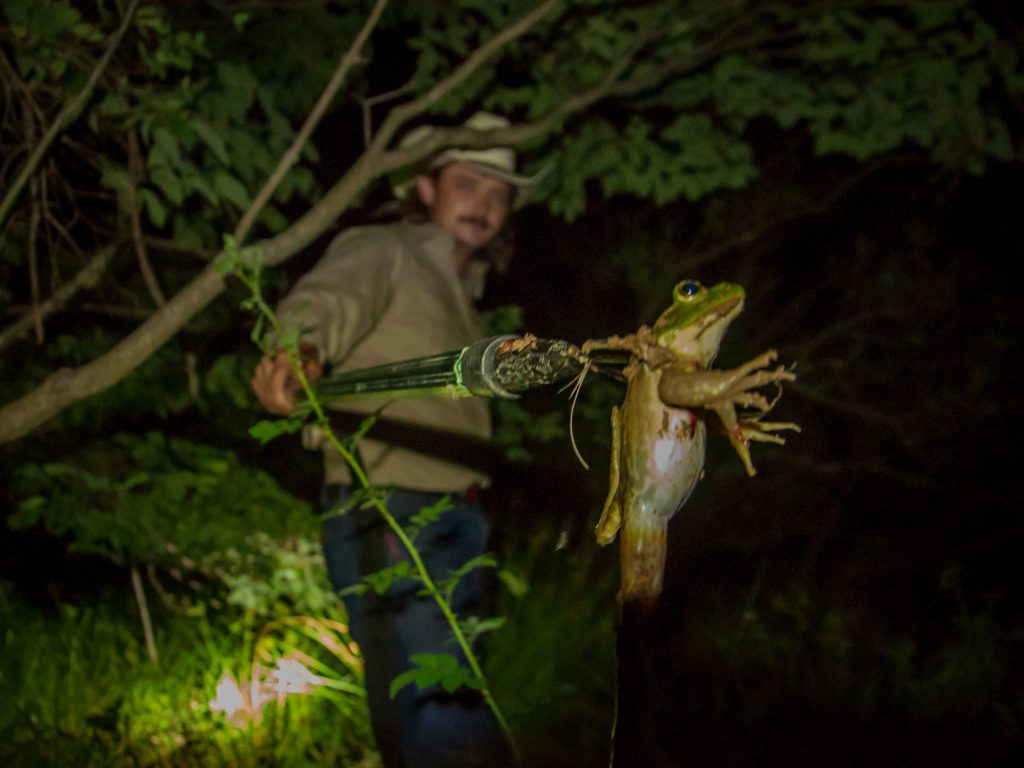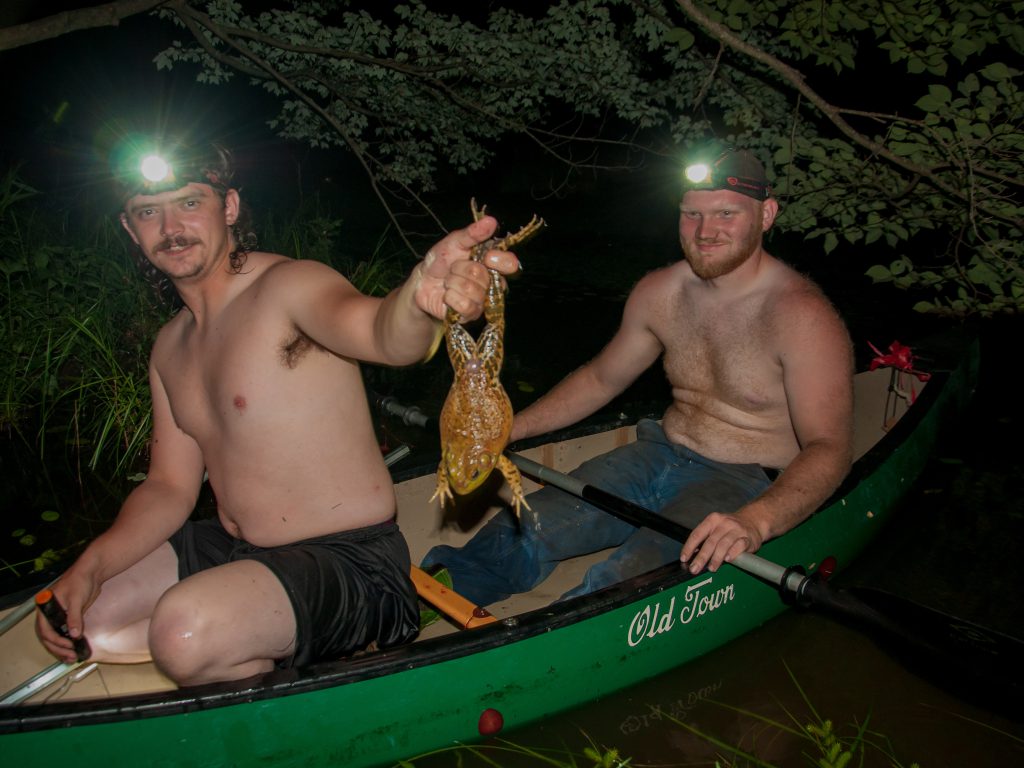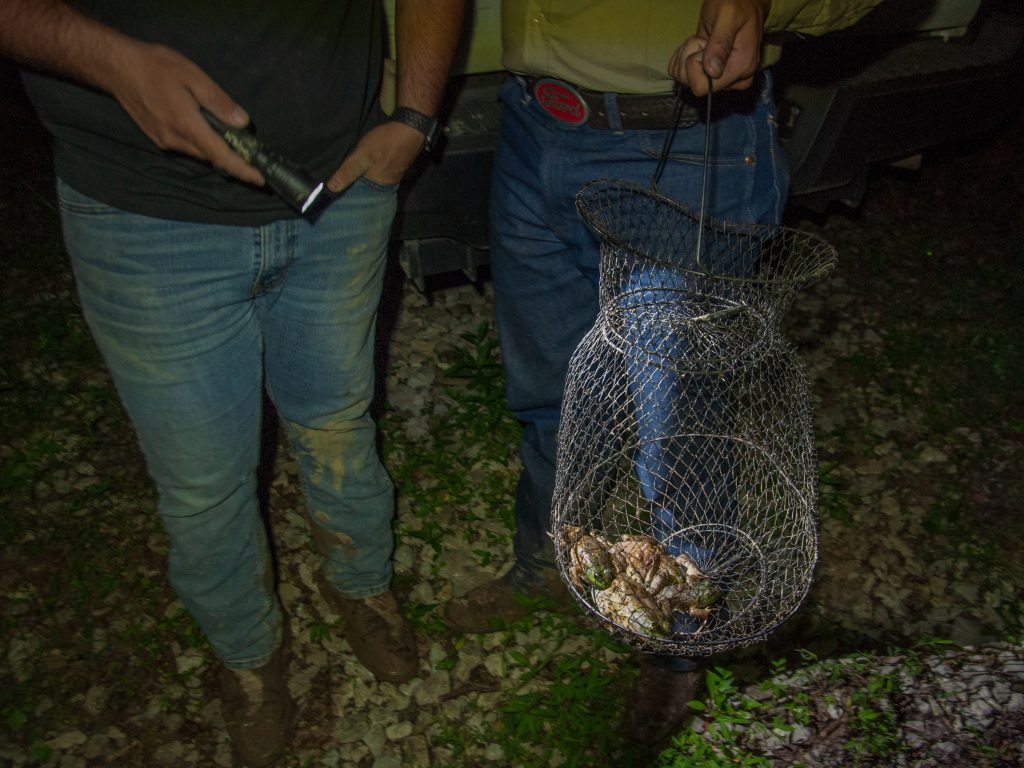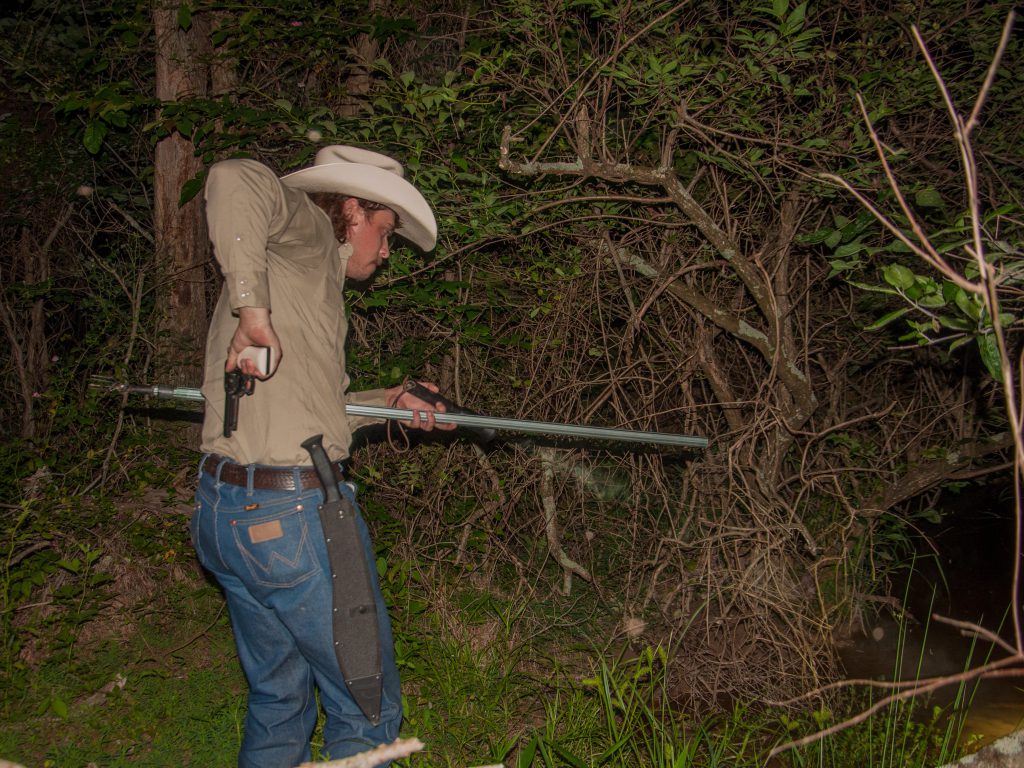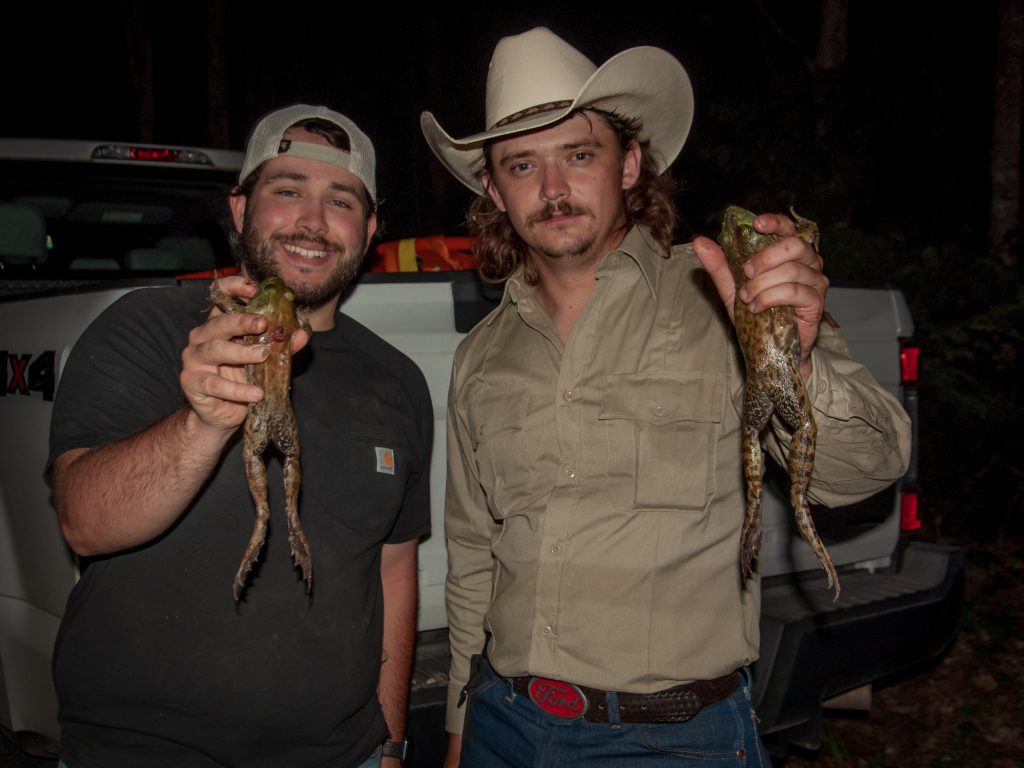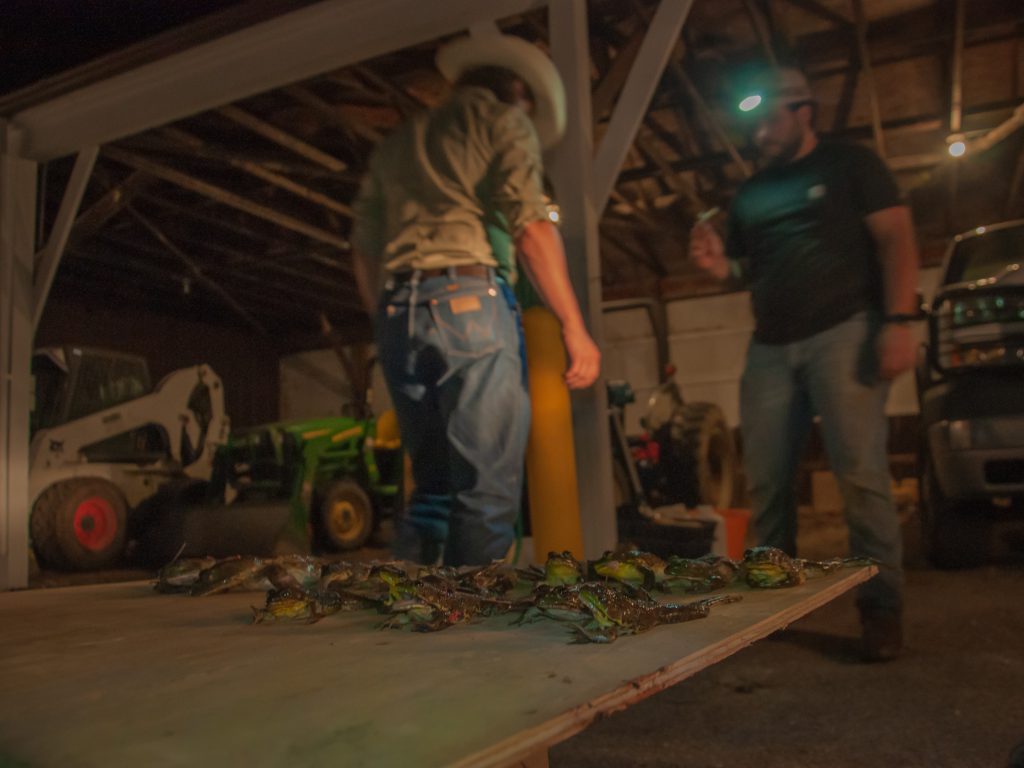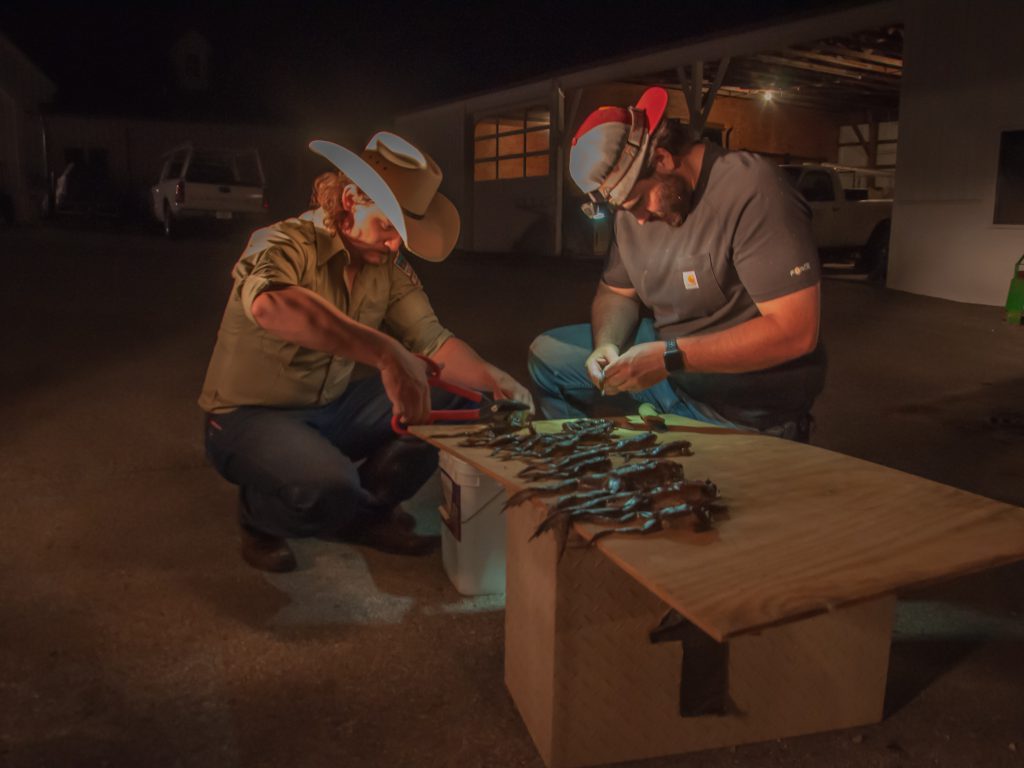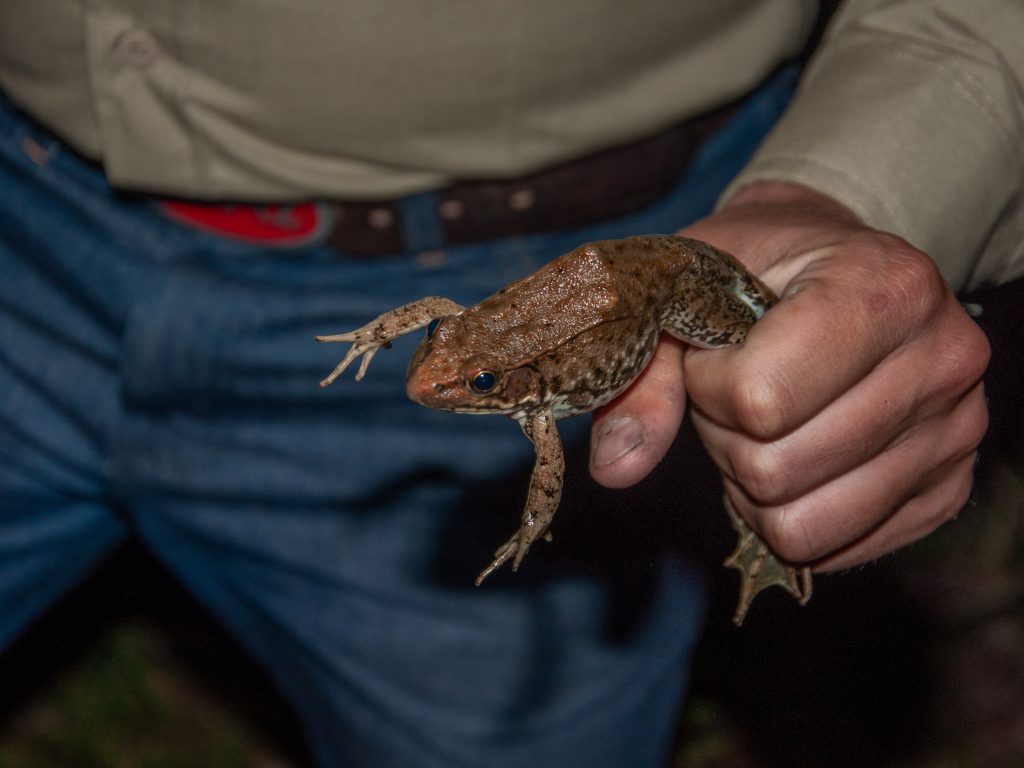Looking Into the World of Frog Gigging
Content warning: The images and text include graphic descriptions of hunting and butchering animals.
The moon emerged out of the clouds at a few minutes past midnight, reflecting on the murky water of a forest pond. I watched as Wyatt, the organizer of a hunting group, directed while a teammate seated behind him piloted their canoe through water covered with lily pads. [1] [1] Interviewees’ last names have been left off to protect their identities. The two friends were looking for bullfrogs.
Hunting frogs using gigs, or multipronged spears, is a widespread practice in some parts of the United States. The small town of Corydon in southern Indiana is one of them. In the surrounding Harrison-Crawford State Forest, giggers like Wyatt carry on family traditions of recreational hunting and interacting with the outdoors.
Wyatt’s grandfather first took him gigging as a child, he tells me, and he started gigging “seriously” when he was in high school. Over the past decade, Wyatt has introduced a couple dozen people to the practice—including me. As an ethnographer and photographer interested in relationships between humans and wildlife—and particularly amphibians—I have been following Wyatt and other giggers for over a year now.
Canoeing in the pond, Wyatt and the team gigged eight frogs that night—a relatively small hunt. The Indiana Department of Natural Resources (DNR) currently permits giggers to hunt and collect bullfrogs and green frogs (less common in this region) up to the prescribed daily bag limit of 25 frogs per licensed individual between June 15 and the end of April. These regulations are intended to ensure that hunting does not hamper the natural breeding cycles of the frogs, leading to species endangerment or extinction. (Bullfrogs are not currently at risk of endangerment—in fact, the U.S. Department of Agriculture considers them an invasive species in some parts of the country.)
Giggers usually show up to the intended hunting spots a couple hours before midnight on the day before the season begins. They scout the ponds in the forest for bullfrogs. Then, at the stroke of midnight, they begin what they call “the gig.”
The act and process of hunting is a ritual that has long caught the attention of anthropologists. Hunting requires collaboration and coordination between the participants in order for it to be successful. So, the activity gives ethnographers insight into social structures and roles. Hunting also involves direct encounters between people and wildlife, making it an intriguing arena for exploring multispecies relationships. Animals are “good to think with,” as the anthropologist Claude Lévi-Strauss memorably put it in another context.
Though Wyatt is the organizer of this group, the hunt is indeed a collaborative social effort. It usually lasts for around three to four hours and sometimes involves the party visiting multiple medium-to-large ponds in a single night. During the hunt, the participants call out to one another when they spot appropriately sized frogs, share tips and stories, and praise one another’s skills.
Frog giggers also claim their own “material culture,” as anthropologists would put it. The hunters wear headlamps or use flashlights to see in the dark, and they use machetes to clear trails in the forest. Giggers sometimes pilot a small boat or canoe into the center of a pond in hope of hunting the bigger bullfrogs, and occasionally get out of the boat and wade through the water as well. When they locate a bullfrog to hunt, they impale it from above using a gig, then pull the body out of the prongs, and put it into a collection basket, which has a one-way-valve style opening to ensure efficiency. Occasionally, they use .22-caliber guns, allowed for hunting game frogs by the state DNR. These tools all make up an integral part of the hunt.
The gig doesn’t end once the hunting ends. After the frogs have been collected, the party heads back to a common meeting place, such as someone’s garage, and begins to sort the hunted frogs based on size. They wash the frogs’ bodies with water and butcher them using knives and pliers, discarding the skin, feet, and upper bodies. The meaty legs, the prized parts of the frog, are cut off, skinned, cleaned, and frozen for future consumption. Giggers say that frogs are some of their favorite foods—they love the taste.
Hunting is an act of violence. How, readers might be wondering, could this practice facilitate any kind of meaningful relationship between humans and the frogs that they hunt? Animal rights organizations such as People for the Ethical Treatment of Animals have protested frog gigging, arguing the practice uses cruel and painful methods. But I see it as important for anthropologists to work to understand cultural practices, even if—perhaps especially if—they do not align with our own.
Gigging provides meaning, identity, and nourishment to the hunters’ lives.
Many giggers are opposed to stricter hunting regulations. But most do care about supporting the frogs and the habitats that allow their long-standing family and community traditions to continue. They acknowledge that not having frogs means there would be no hunting them. Most giggers avoid hunting young, smaller frogs as a rule of thumb, despite the absence of regulations on frogs’ sizes, to protect a vast majority of the breeding population for the upcoming years. Once a pond has been hunted, the giggers I’ve met leave it undisturbed for the next couple years so frog populations can bounce back.
These shared rules around the ethics of hunting also speak to the importance of place and community. For the giggers, individual ponds and gigging sites hold significance. Each individual pond has a name and is used as a location marker for the giggers to tell stories personal to them from gigs in the previous years. The act of gigging provides meaning, identity, and nourishment to the hunters’ lives.
Still, looking at frog gigging—and recreational hunting more broadly—in the United States raises some important questions. Are hunters’ personal ethics enough to ensure that vital ecosystems are conserved? Or are stricter regulations needed to protect the health and well-being of animals and habitats? Studying the close interactions between hunters and their environments can provide insights into these questions—and serve as a reminder of how the lives of all creatures, human and nonhuman, are intricately entangled with one another.
































